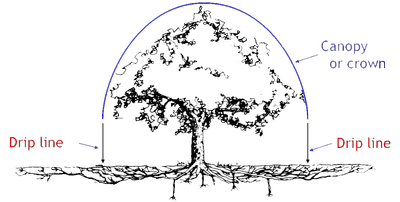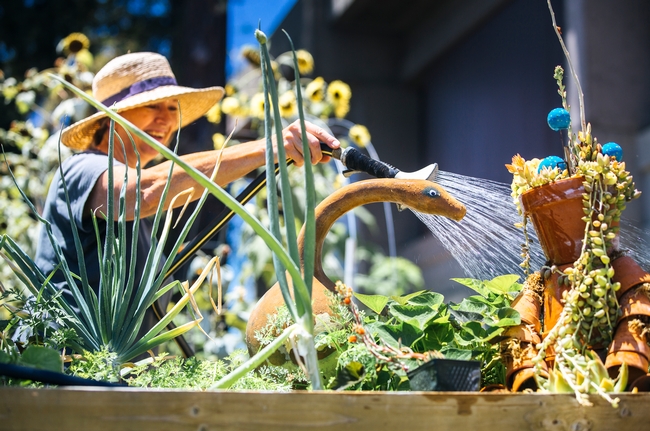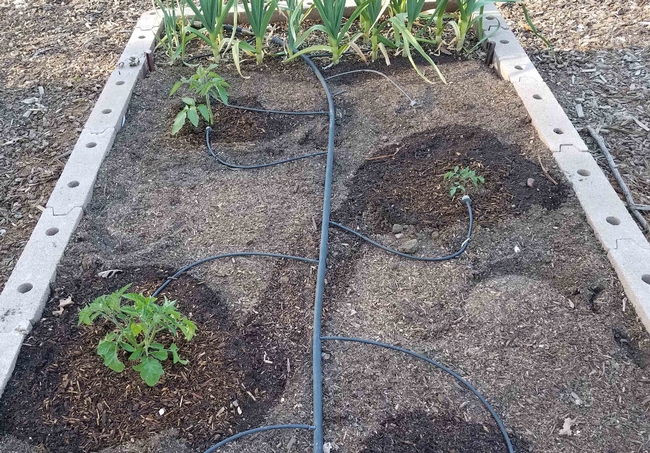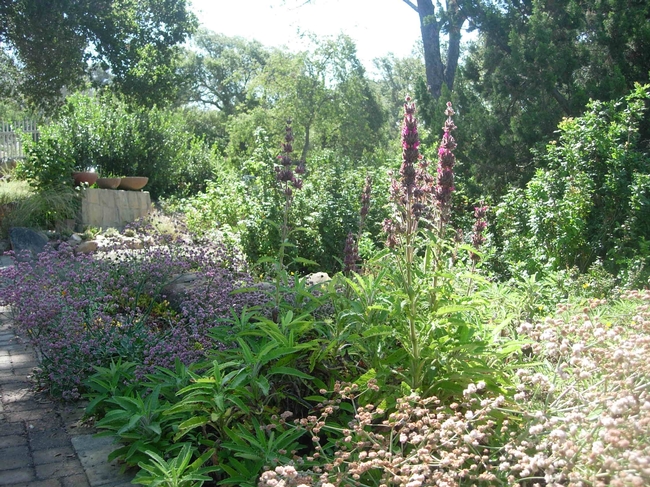- Author: Barbra Braaten
Water is essential for any garden, but it's crucial to use water wisely in a place like California, where droughts are common. Effective water management can help home gardeners keep their plants healthy while conserving this precious resource. Thoughtful water management uses resources efficiently and sustainably to meet current and future needs. It involves planning, developing, distributing, and managing the optimum use of water to ensure plants survive and look good. By conserving water, home gardeners contribute to the preservation of local ecosystems and the sustainability of the environment.
Plant Water Use
Understanding how much water your plants need is the first step in effective water management. Different plants have different water requirements. For instance, succulents and cacti need less water than vegetables or fruit trees. It's important to group plants with similar water needs together. This way, you can avoid overwatering or underwatering specific plants. You can learn about plant water needs from plant labels, gardening books, or by reaching out to your local UC Master Gardener volunteers for support. Additionally, observing your plants and learning their symptoms of water stress, such as wilting or drooping leaves, can also help inform water management.
Watering Systems
Several watering systems can help manage water use in a garden. Drip irrigation is one of the most efficient methods. It delivers water directly to the roots of plants, minimizing evaporation and runoff. Soaker hoses, porous hoses that seep water along their length, are another good option for watering garden beds. Traditional sprinklers can be used, but they are less efficient because they tend to waste water through evaporation and runoff. Newer, more advanced systems include weather-based controllers that adjust watering schedules based on weather conditions, ensuring plants get the right amount of water without waste.
Irrigation Best Practices
Take a proactive role in water conservation by adopting best practices for irrigation. Watering early in the morning or late in the evening reduces evaporation, ensuring more water reaches the plants. Mulching the garden helps retain soil moisture and reduces the need for frequent watering. Regularly checking for leaks in the irrigation system and repairing them promptly can prevent water loss. Adjusting the watering schedule based on the season and weather conditions is also essential. During cooler months or after rainfall, plants need less water; in the hot summer, they may need more frequent watering.
Use Drought Tolerant Plants
One of the most environmentally responsible ways to conserve water in a garden is to use drought-tolerant and/or native plants. Drought tolerance reflects the ability of a plant to withstand less than optimal water supplies due to adaptive or avoidance mechanisms. While many native plants possess drought-tolerant traits and require less supplemental irrigation once established, many non-native plants Mediterranean-adapted plants also thrive on relatively lower water. It is important to remember that these plants require water regularly until their root structure is well established in landscape soil. Maintaining these plants with deep and infrequent irrigation once established is a great way to reduce landscape water use. By incorporating these plants into your garden, you're also providing habitat for local wildlife. This creates a beautiful, low-maintenance landscape that thrives with less irrigation.
Best Practices for Keeping Plants Alive During a Drought
During a drought or under water restrictions, it's essential to prioritize how you use water in the garden. Focus on watering the most valuable and vulnerable plants first, such as shade trees and young trees. Slow, deep watering is more effective than frequent shallow watering. This involves watering to a depth slightly below the plant root zone which encourages roots to grow deeper into the soil, making plants more drought-tolerant. Reducing the size of your lawn or replacing it with drought-tolerant ground covers can also save significant amounts of water. Additionally, using shade cloth or temporary shading can help reduce water loss by protecting plants from intense sunlight.
By understanding plant water use, choosing suitable watering systems, adopting best irrigation practices, using drought-tolerant plants, and implementing drought survival strategies, California home gardeners can maintain a healthy and beautiful garden while conserving water. Water management is beneficial for your garden and the environment, and is an especially important practice for Californians. Your conscious efforts in water management contribute to the sustainability of our environment.
To learn more please reach out to your local UC Master Gardeners Program.
- Author: Melissa G. Womack

Prioritizing Trees for Landscape Water Use
Many residents have been encouraged to reduce water use by turning off their outdoor watering systems, but this may be causing stress to established trees that are becoming increasingly thirsty for water.
In most traditional residential landscapes trees are surrounded by turfgrass. Turfgrass surrounded trees take advantage of the frequent and shallow watering schedule, typically set to help the lawn flourish. When residents eliminate or reduce water for lawns, trees cannot easily adapt to the new water shortage.
“Mature fruit trees and landscape trees are worth saving! Recognizing early signs of drought stress is important because irreversible damage can occur that no amount of watering will correct.” said Janet Hartin, UC Cooperative Extension advisor in a recent article, Save Water, But Also Save Trees During a Drought.
Replacing small plants, lawns and shrubs is easy compared to a large tree which takes years to become established. Saving mature trees during a drought should be a top priority in your landscape water use allocation.
“Two seasons without enough water can result in severe drought stress and even kill a tree,” warned Hartin. “Also, drought-stressed trees are more prone to damage from diseases and insects than non-stressed trees.”
Understanding how to water a tree effectively is important to avoid water waste and to ensure that the tree is receiving the correct amount of water for its survival.
One key factor to successfully watering a tree is understanding what soil type is present. Understanding soil types is an important factor in determining how much water is stored in the ground. For example, sandy soils dry out quickly while clay soils retain more water. Contact your local UC Master Gardener Program to learn how to determine your soil type.

Tree Ring Irrigation Contraption (TRIC)
Recently the Calif. Center for Urban Horticulture (CCUH) at UC Davis, UC Division of Agriculture and Natural Resources (ANR) and Ewing Irrigation devised a unique watering system called the Tree Ring Irrigation Contraption (TRIC). Using previous data from Netafim drip tube tables and from the Irrigation Association Landscape Irrigation Auditor manual, the partners envisioned a possible solution to mitigating drought conditions and the effect on landscape trees. The TRIC is an inexpensive kit that homeowners can put together for around $100 for one large tree.
The TRIC could enable homeowners to adequately water trees to a depth of three feet with confidence, by using the recommended parts and using the TRIC calculator with accurate information. Aside from a recommended parts list, there is a “plug-in” calculator created by Dr. Loren Oki, UC ANR Associate Specialist in Cooperative Extension Landscape Horticulture for UC Davis & UC ANR. The TRIC calculator helps determine the run-time needed for the device.
Learn more by visiting:






